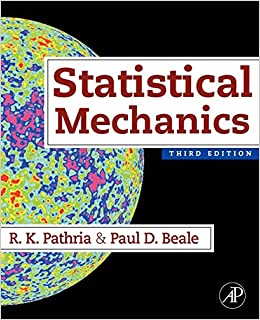Since, by definition, [ alpha=mathrm{v}^{-1}(partial mathrm{v} / partial T)_{P} text { and } B^{-1} equiv kappa_{T}=-mathrm{v}^{-1}(partial mathrm{v}
Question:
Since, by definition,
\[
\alpha=\mathrm{v}^{-1}(\partial \mathrm{v} / \partial T)_{P} \text { and } B^{-1} \equiv \kappa_{T}=-\mathrm{v}^{-1}(\partial \mathrm{v} / \partial P)_{T}
\]
we must have:
\[
\begin{equation*}
[\partial(\alpha \mathrm{v}) / \partial P]_{T}=-\left[\partial\left(\mathrm{v} B^{-1} \right) / \partial T \right]_{P} \tag{1}
\end{equation*}
\]
Using the given empirical expressions, we obtain for the left-hand side of
\[
\begin{equation*}
\left(\frac{\partial(\alpha \mathrm{v})}{\partial P} \right)_{T}=\frac{1}{T}\left(\frac{\partial \mathrm{v}}{\partial P} \right)_{T}=-\frac{\mathrm{v} B^{-1}}{T}=-\frac{1}{P T}\left(\mathrm{v}+\frac{a^{\prime}}{T^{2}} \right) \tag{1}
\end{equation*}
\]
and for the right-hand side
\(-\left(\frac{\partial\left(\mathrm{v} B^{-1} \right)}{\partial T} \right)_{P}=-\frac{1}{P}\left[\left(\frac{\partial \mathrm{v}}{\partial T} \right)_{P}-\frac{2 a^{\prime}}{T^{3}} \right]=-\frac{1}{P}\left(\alpha \mathrm{v}-\frac{2 a^{\prime}}{T^{3}} \right)=-\frac{1}{P}\left(\frac{\mathrm{v}}{T}+\frac{a^{\prime}}{T^{3}} \right)\).
The compatibility of the given expressions is thus established.
To determine the equation of state of the gas, we note from the given expression for \(\alpha\) that
\[
\left(\frac{\partial \mathrm{v}}{\partial \mathrm{T}} \right)_{P}=\frac{\mathrm{v}}{T}+\frac{3 a^{\prime}}{T^{3}} \text {, i.e. }\left[\frac{\partial}{\partial T}\left(\frac{\mathrm{v}}{T} \right) \right]_{P}=\frac{3 a^{\prime}}{T^{4}}
\]
whence
\[
\begin{equation*}
\frac{\mathrm{v}}{T}=-\frac{a^{\prime}}{T^{3}}+f(P) \text {, i.e. } \mathrm{v}=-\frac{a^{\prime}}{T^{2}}+T f(P) \text {, } \tag{2}
\end{equation*}
\]
where \(f\) is a function of \(P\) only. We then obtain for \(B\)
\[
\begin{equation*}
\mathrm{v} B^{-1}=-T f^{\prime}(P) . \tag{3}
\end{equation*}
\]
Combining (2) and (3), we get
\[
\frac{f^{\prime}(P)}{f(P)}=-\frac{\mathrm{v} B^{-1}}{\left(\mathrm{v}+a^{\prime} / T \right)^{2}}=-\frac{1}{P}
\]
It follows that \(f(P)\) is proportional to \(1 / P\) and hence, by (2),
\[
P=\text { const. } T\left(\mathrm{v}+a^{\prime} / T^{2} \right)^{-1}
\]
Step by Step Answer:






